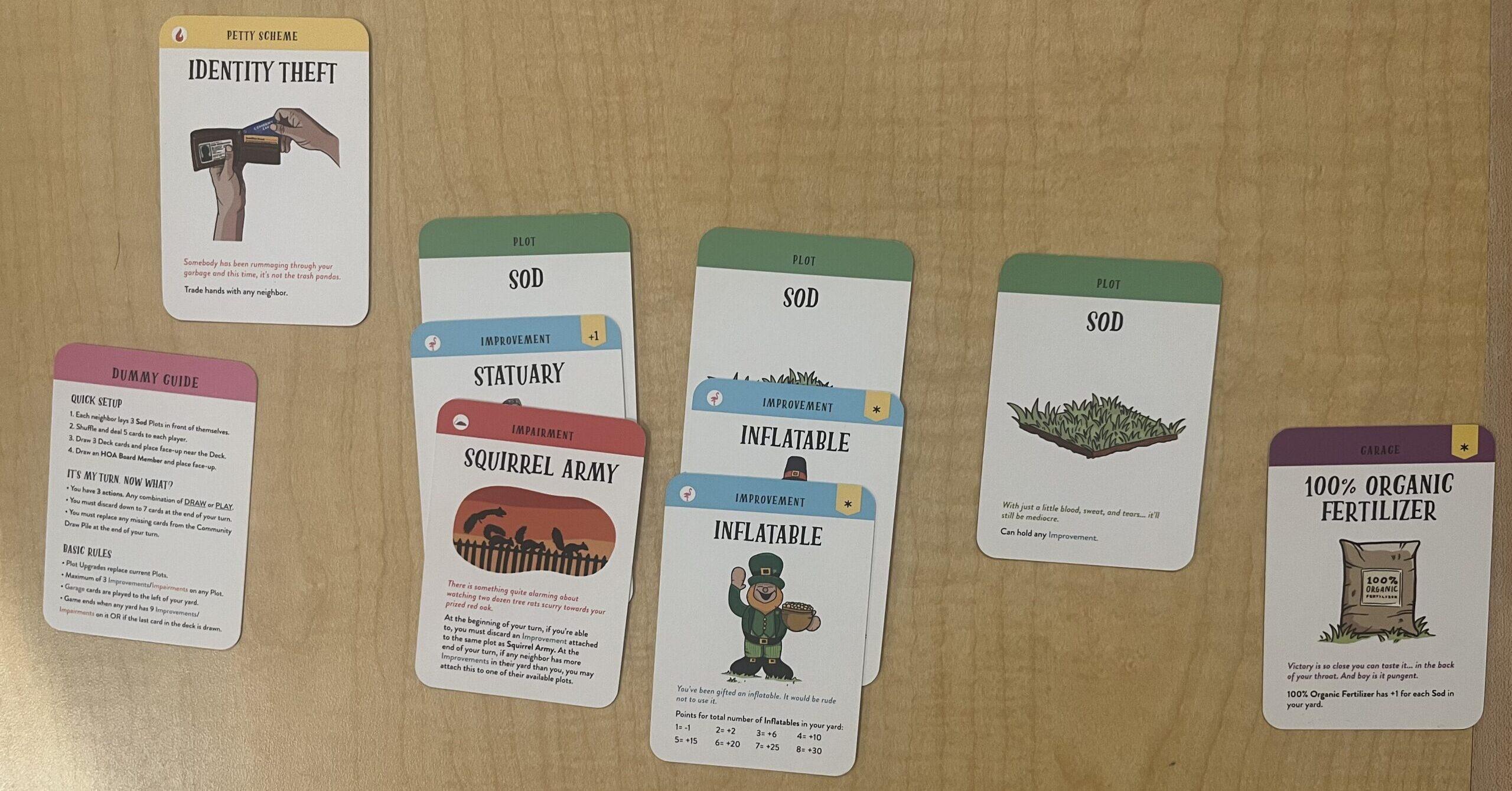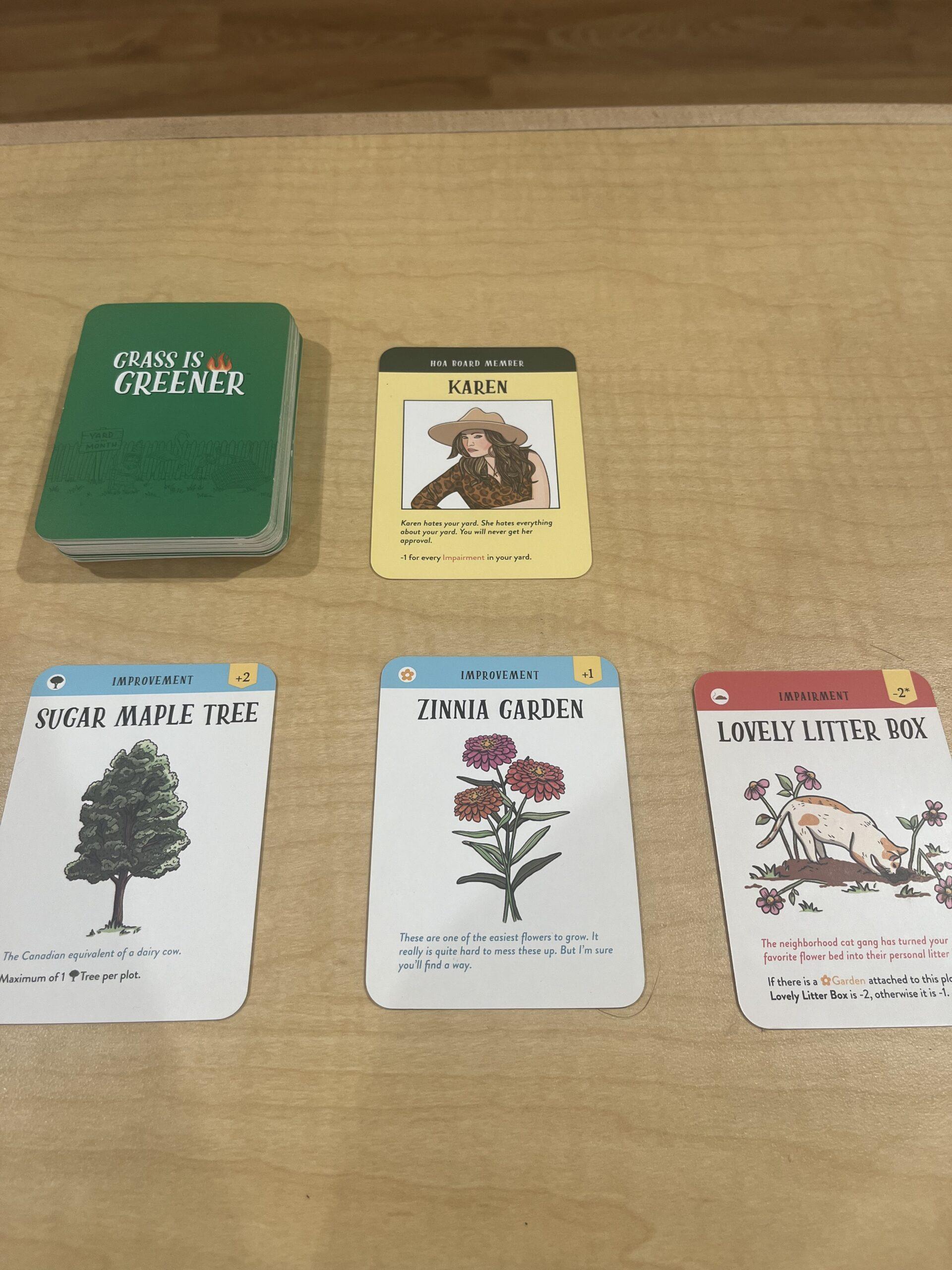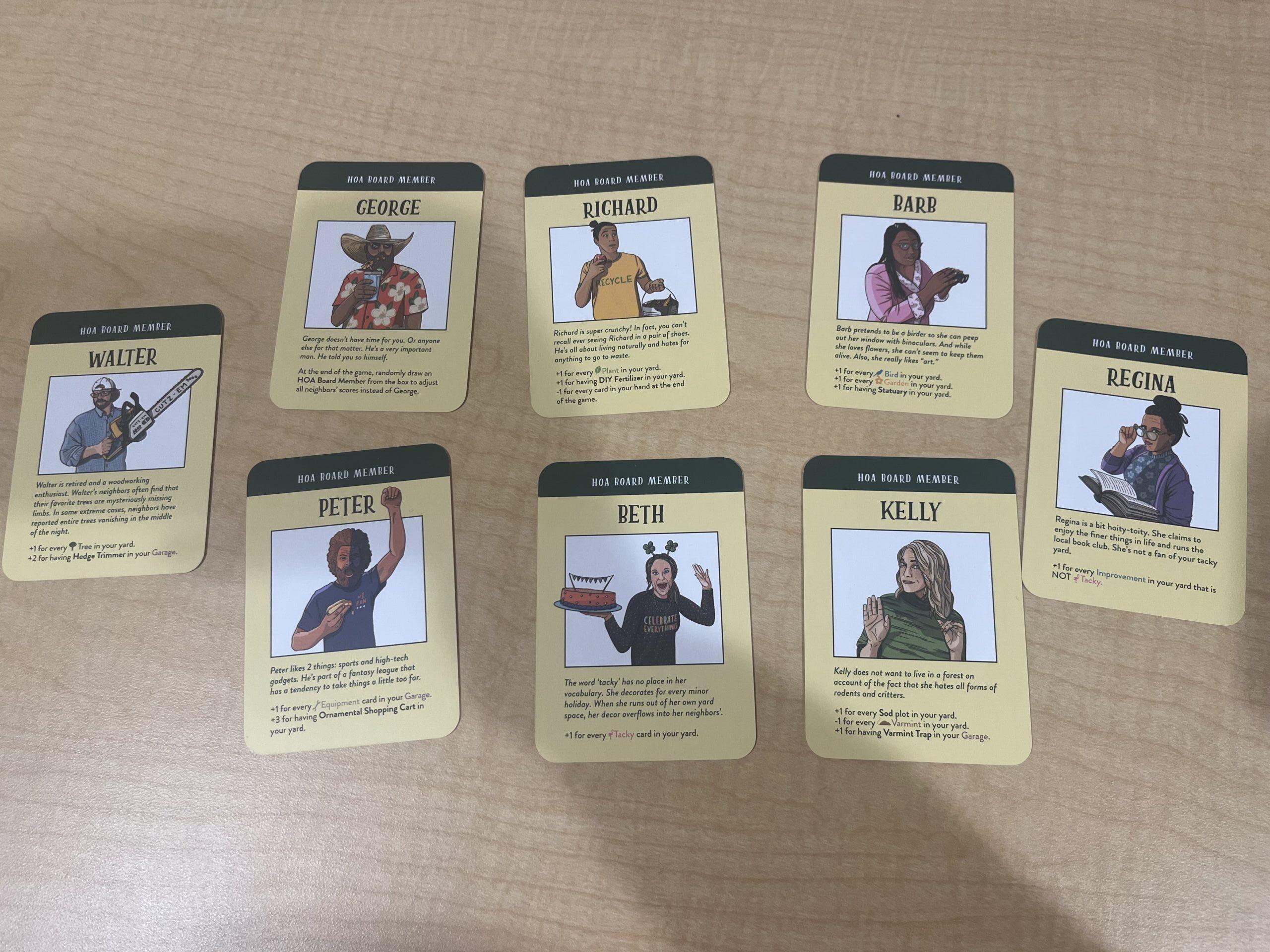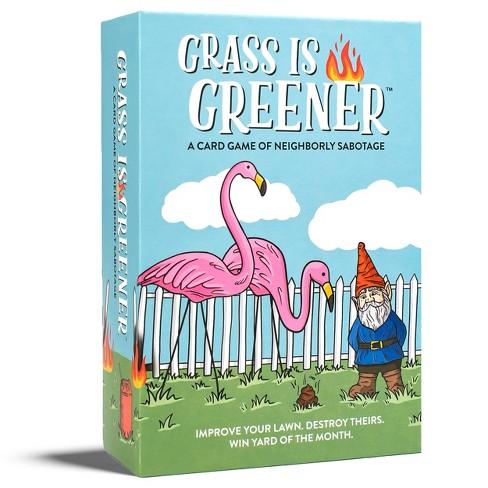The game I chose for my critical play is called “Grass is Greener”. This game is for people aged 13+. It was made by Joel Herold and illustrated by Korie Herold. The game is played in card form.
Analysis

This is a game of neighborly sabotage. The aim is to build out your lawn and collect points, as well as, sabotage other players’ lawns to make them lose points. Additionally, you want to satisfy the HOA members by fulfilling certain preferences they may have, such as tacky lawn furniture.
I’d describe this game as a fellowship and challenge type of fun. I often found myself strategizing. For instance, I’d keep track of cards others chose from the community pile to guess what kind of lawn they were making. I think the mechanic of allowing players to draw from a community pile (image to the right) and place items on their lawn in public allows for other players to strategize ways to sabotage others. This can quickly get out of hand, so I think it was an effective choice to have the mechanic of only allowing 3 actions (placing or drawing) per turn. Because of this choice, a dynamic was created that made it so that players had to think multiple turns ahead of time to have an effective strategy.
 The mechanic of the HOA members is also interesting because it influences what players decide to place on their lawns and gives reason to sabotage the lawn of others. When I was playing, the HOA member we had to abide by was ‘Karen’, who subtracts 1 point for every Impairment. I made sure to place as many impairments as I could to make others lose points.
The mechanic of the HOA members is also interesting because it influences what players decide to place on their lawns and gives reason to sabotage the lawn of others. When I was playing, the HOA member we had to abide by was ‘Karen’, who subtracts 1 point for every Impairment. I made sure to place as many impairments as I could to make others lose points.
Each time a card is placed in a lawn, or a player is sabotage, players experience betrayal, satisfaction, strategy, and creativity. I really enjoyed playing this game for all of the above reasons.
At the end of the game, to determine the winner, players have to add all of the points. However, the points are a mixture of odd and even, positives and negatives, making it hard to determine the winner. Me and my friends found ourselves just estimating who was the winner. I would suggest making the point system simpler.
A similar game is Suburbia, where players compete to build the most successful city. It is a tile based game, instead of a card based game, and players gain points based on the population of their city instead of improvements to their yard. Another game is Machi Koro, where players build a city and compete to be the first to complete landmarks. Similarly, players can sabotage other players by making others pay them income.
Our Concept
Our concept is a cooking game, where each player tries to fulfill a recipe, please judge’s criteria, but also sabotage each other and complete and discover secret missions.
Comparison
This game is similar to our concept in the way that players are competing to build out something. For instance, in our concept, players want to cook a dish from a recipe, but in the game, players are trying to build their lawn.
Additionally, both the game and our concept have the ability to sabotage other players. In our concept, we have made it so that during each turn, a player can choose to take an event card which may force them to sabotage other players. In the grass is greener game, players can draw sabotage cards to play on other players, if they choose.
Lastly, another similarity is that both the game and our concept include the concept of a judge. In our concept, the judge is a food critic, but in the game, it is an HOA board member. In both, the judge allows players to gain or lose points and guide the direction players take. However, we are still unsure if we want the judge in our concept to be a player or a card.
Contrast
One way in which our concept differs is that, in our concept, players are also trying to complete a secret mission that earns them more points, as well as, discover the secret missions of other players. For instance, if you are tasked with cooking a birthday cake, your secret mission may be to include mushrooms in your recipe. It may be obvious to other players that this is your mission, but if you are making a steak dish, it may be less obvious. It is up to the player to decide which recipe best fits the judges criteria, but also allows for being able to complete the secret mission successfully.
Additionally, our concept includes the ability to trade with other players as a type of action they could take, in addition to drawing and placing ingredients. Trading with other players can give other players insights into the type of recipe you are going for or what your secret mission could be.




